The Noltings Explore The Ancient Civilization of Egypt
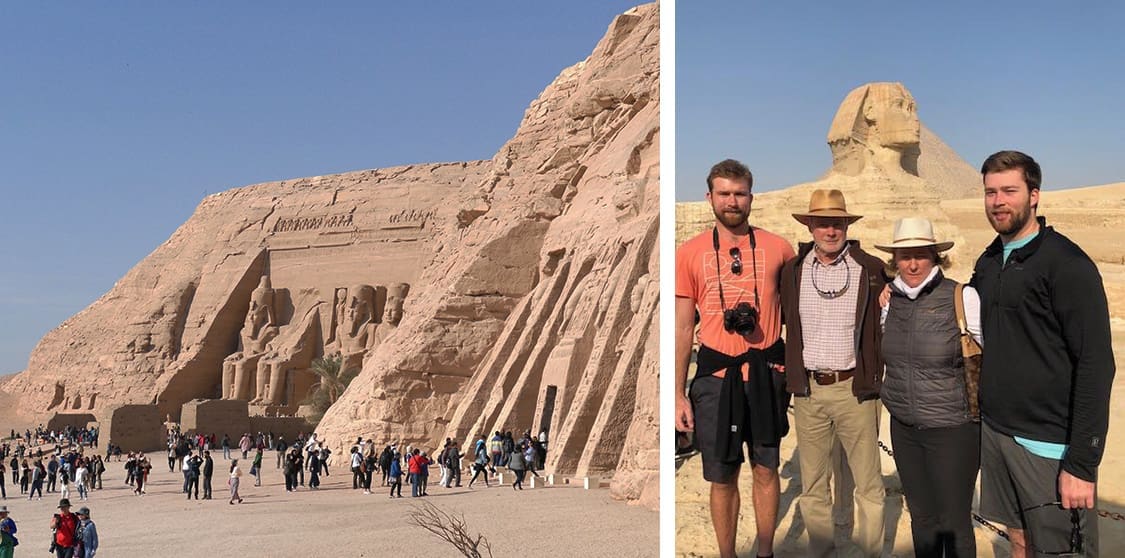
For those of you who have qualms about visiting Egypt in the aftermath of the Arab Spring, let it be known: tourism in Egypt is, once again, thriving.
Following our family trip to Morocco this time last year, we decided to visit yet another North African country. Where Morocco was marked by the beautiful intricacies of its handicrafts and architecture, Egypt is undoubtedly a place of undiminished monumentality. We felt the best way to see and understand this hallowed country was by a Nile river cruise.
Most visitors possess a vague understanding of Ancient Egypt’s timeline. But even if you are not a history-buff, we highly suggest you read as much of its history and mythology as possible beforehand in order to have a more rewarding experience.
LUXOR: KARNAK & LUXOR TEMPLES
Our first day was treated as a day of rest after a transatlantic flight via Cairo before beginning the week-long cruise. The Winter Palace Hotel, with its quiescent gardens, colonial-era vibe, and views of the Nile River, fit the bill perfectly.

A frequent sight along the Nile was feluccas. Though the precise origin of these small, wooden boats rigged with lateen sails is unknown, feluccas have been a fixture of the Nile and Eastern Mediterranean for over a millennium for fishing and river-crossings.

For dinner we went to the Hilton Luxor Resort & Spa for our first traditional Egyptian dinner. Egyptian food shares many similarities with Greek and Eastern Mediterranean cuisine, namely use of fresh vegetables, legumes, and spices (especially cumin). Lunch and Dinners will typically begin with mezes of baba ghannoug, tehina, and hummus with the local bread, eish baladi. Here are some examples of typical Egyptian dishes:

Grilled lamb kofta

Fresh bread and falafel
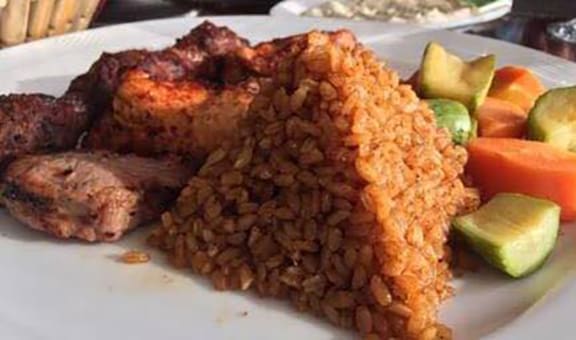
Mixed grill and pyramid rice
Though a majority of Egypt’s inhabitants are practicing Muslims, alcohol consumption is permitted. Like Morocco, Egypt also has wine-growing regions: not only are they more affordable then imports, some are quite good!
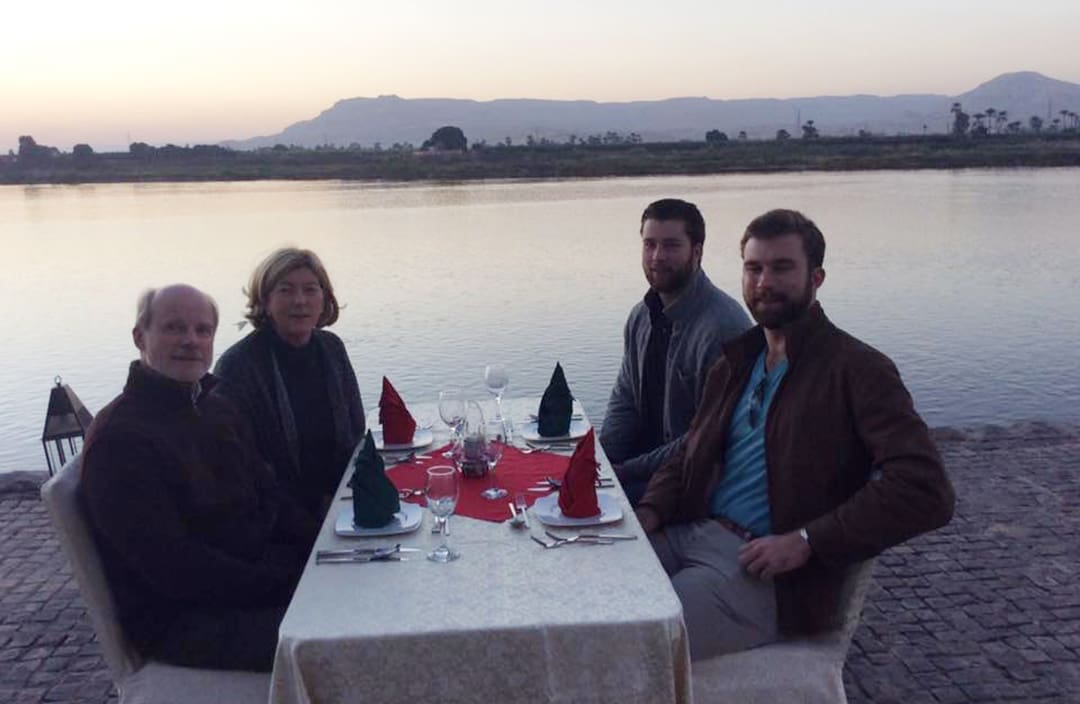
Our first day of touring began with meeting our private guide. As a college graduate in Egyptology, she was able to provide insightful explanations and offer incisive answers to our questions. But she was also very friendly and charismatic, which is a must for a private guide that accompanies you on a multi-day trip.
We reached our first destination, Karnak Temple, after a quick, painless ten-minute drive in our private van from the Winter Palace Hotel. Originally constructed during the Middle Kingdom (c. 20th century B.C.E.), this massive temple complex reached its apex of splendor under the patronage of pharaohs from the New Kingdom, such as Hatshepsut and Ramesses II. Up until the Ptolemaic era, each pharaoh left his (or her) imprint on ancient Egypt’s holiest site.



Perhaps the most famous feature of Karnak is its Hypostyle Hall. In an area of approximately the size of a football field lie 134 sandstone columns arranged in 16 rows, the largest of which are about 70 feet tall and 10 feet wide at its base: For a sense of scale, our son Nicholas is 6’8”! What was equally astounding was the ubiquity of free-standing, sunk-relief and low-relief sculptures. Outside of the Hypostyle Hall itself some of the columns and friezes retained their original painted pigments.
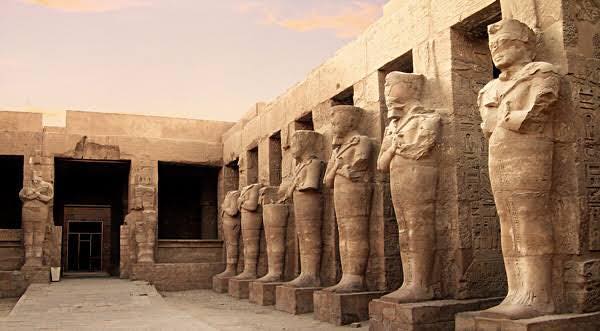
Afterwards, we visited the Luxor Museum, a smaller, uncluttered museum with an excellent collection of artifacts from each era (including the idiosyncratic sculptures of Akhenaten). At nightfall, we proceeded to Luxor Temple in order to view it when it is spectacularly illuminated by floodlights, augmenting its already reverential aura. It is hypothesized that Luxor Temple was where new pharaohs were crowned and unlike most Egyptian temples, was not dedicated to a cult god, goddess, or a former pharaoh, but instead to the idea of kingship itself.
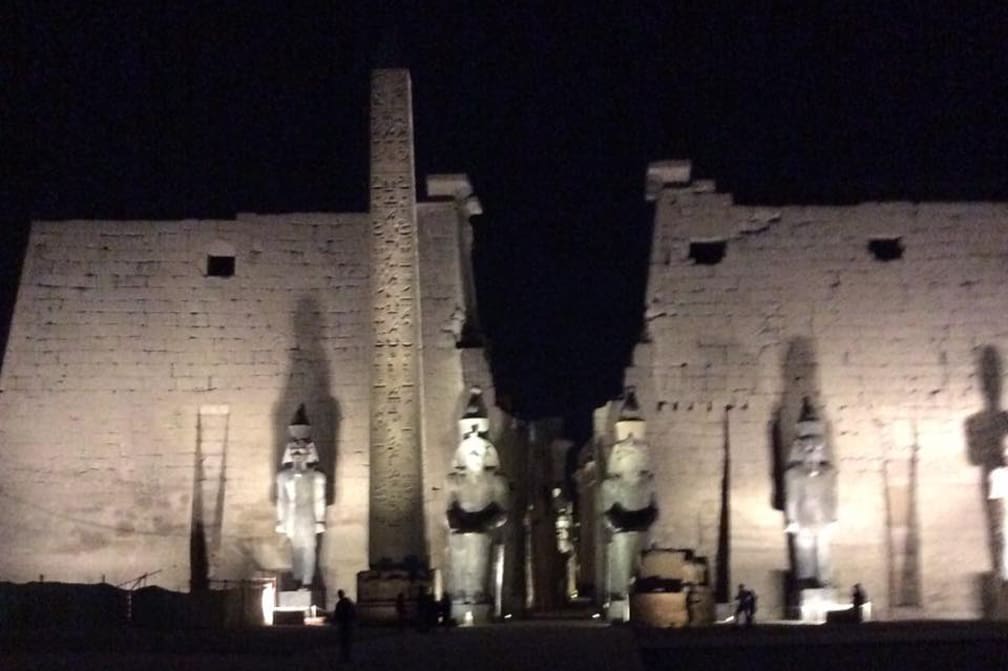
The temple’s construction is dated to the New Kingdom (c. 1400 B.C.E.) and the 5 statues along the temple’s front facade are all of Ramesses II; as we figured out by the end of this trip, he really liked to make statues of himself!

LUXOR: VALLEY OF THE KINGS & DEIR EL-BAHARI
After checking into our rooms aboard the Jaz Senator (our river cruise vessel), we awoke the following morning to an assemblage of hot air balloons silently gliding parallel to the Nile’s riverbank. It was an auspicious start to a very rewarding day!

Our day began with a visit to the Valley of the Kings, home to innumerable number of subterranean tombs. During the New Kingdom, above-ground pyramids were seen as the pinnacle of how a pharaoh should be edified and entombed. But their construction soon became to be seen as wasteful and too conspicuous for tomb robbers. Yet, very few tombs’ treasures avoided their clutches, except for the world-famous tomb of Tutankhamen. Numerous artifacts from his tomb can be seen at the Egyptian Museum in Cairo (which we visited later on).
But the absence of artifacts aside, the beauty of the low relief sculptures and the pigmentation were remarkable. Virtually all of the scenes depict some part of the trial and tribulations the pharaoh underwent in the afterlife. A select few of the tombs are accessible at a time, and change intermittently. A separate ticket is required to see King Tut’s tomb, and is the only one where photography is completely prohibited.




The afternoon was spent visiting Deir el-Bahari mortuary temple complex; the most famous is the Temple of Hatshepsut. Though most of the artifacts have been relocated to various museums, the site itself is, nevertheless, awe-inspiring. Constructed into a steep cliff side, the temple itself sits atop a series of colonnaded terraces connected by ramps. The climb up is not grueling, and is worth it as there are some pigmented low-relief sculptures worth seeing. The photograph below is of our son Miles, posing with his arms crossed a la Osiris, the god of the underworld and afterlife.


DENDERAH
The following morning we drove north to visit the Temple of Denderah. The main temple (built during the Ptolemaic era) is dedicated to Hathor, whose wide face with cow ears can be seen on top of all the column heads. The temple also has an extensive crypt with fantastic relief sculptures along its granite walls. Also of note is the scene of Cleopatra VII and her son (with Julius Caesar) Caesarion depicted on the back side of the temple.



We really enjoyed Denderah! Not only was it very well preserved and aesthetically unique, it was also far less crowded than our other destinations surrounding Luxor.
EDFU & KON OMBO
We then truly began our cruise, with Aswan as our ultimate destination. We made two stops: the first at Edfu to visit the Temple of Horus and the second at the eponymous temple at Kon Ombo.
Edfu’s well-preserved temple dates to the Ptolemaic era. It most famously possesses scenes depicting the eternal clash between the gods Horus and Seth.


We then arrived at the Temple of Kon Ombo after nightfall. This temple is unique in the fact that it possesses two halves, one dedicated to Sobek and the other to Horus. Furthermore, it is also perfectly symmetrical, though its ruined state makes it difficult to discern that. As it was partially dedicated to the crocodile God Sobek more than a hundred crocodile mummies have been uncovered; several of them can be seen in the adjoining museum.

ASWAN
We then arrived at our final destination along our Nile River Cruise Aswan. For most of Ancient Egypt’s history, because of its location just north of the 1st cataract, the present-day location of Aswan served as ancient Egypt’s southern outpost for both security and trade with the lands of Punt (modern-day Ethiopia and Eritrea) and Nubia (modern-day Sudan). It was also the sight of granite quarries used for its monuments constructed in Thebes and elsewhere, including Hatshepsut’s famous “Unfinished Obelisk.”
Aswan’s most famous landmark is the Temple Complex at Philae, which is dated to the Ptolemaic era. In actuality, it is located at the nearby Agilikia Island: the anticipation of the Aswan High Dam’s construction and subsequent formation of Lake Nasser prompted a massive relocation effort by UNESCO. Consequentially, the temple complex is only accessible by boat. The island was attributed as one of several birth places of Osiris, and as a result, his imagery is located everywhere within the temple complex. The temple is also reported to be the last bastion of the ancient Egyptian religion.
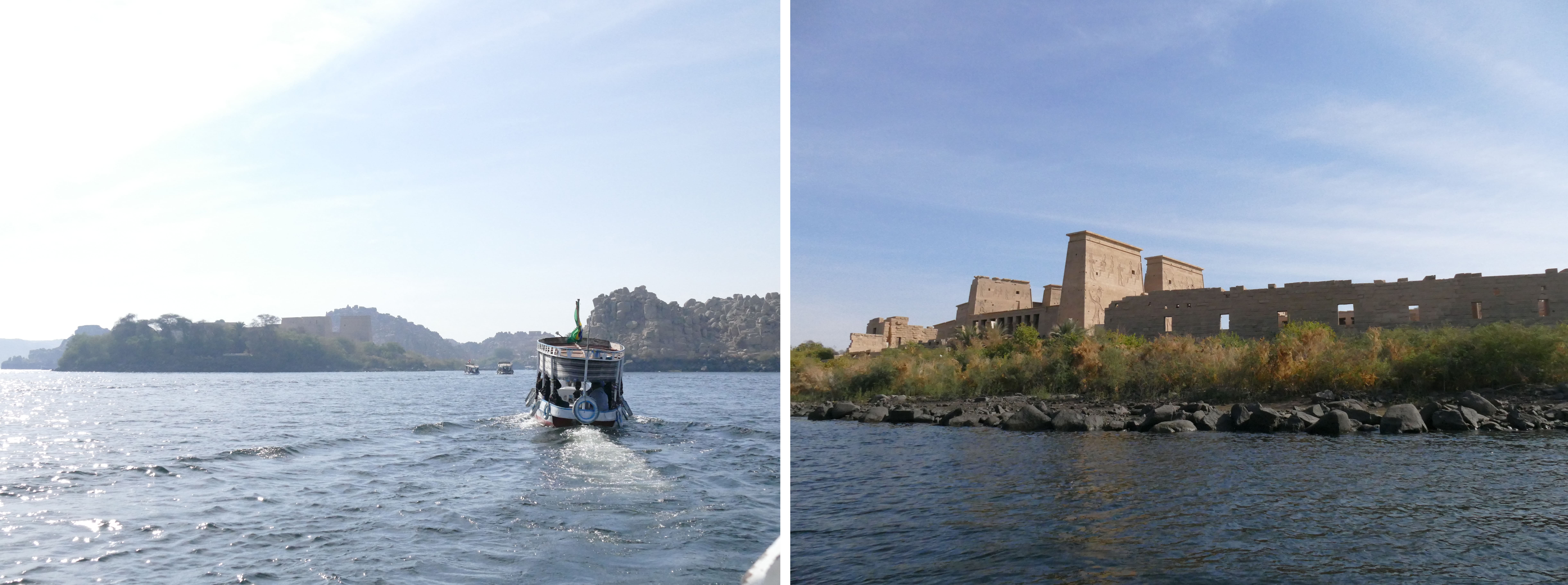
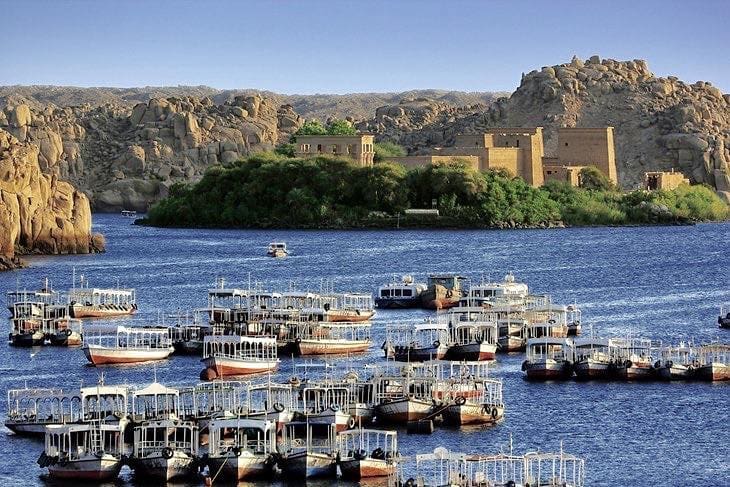

We made two further stops. The first was at the “Unfinished” Obelisk. Carved during the reign of Queen Hatsheput and intended for the Karnak Temple, its sheer size (140 ft and 1200 tons) would have dwarfed any other obelisk in existence; unfortunately, it was abandoned mid-carving when cracks appeared in the granite.

Our second stop was a site inspection, and afternoon drink, at the famous Old Cataract Hotel. The outdoor deck we sat at offered a phenomenal, elevated view of the Nile River. For those familiar with the author Agatha Christie, this was a frequent setting in her novel Death on the Nile. It is a gorgeous property, whose recent restoration successfully maintained its more than 100 year-old character.
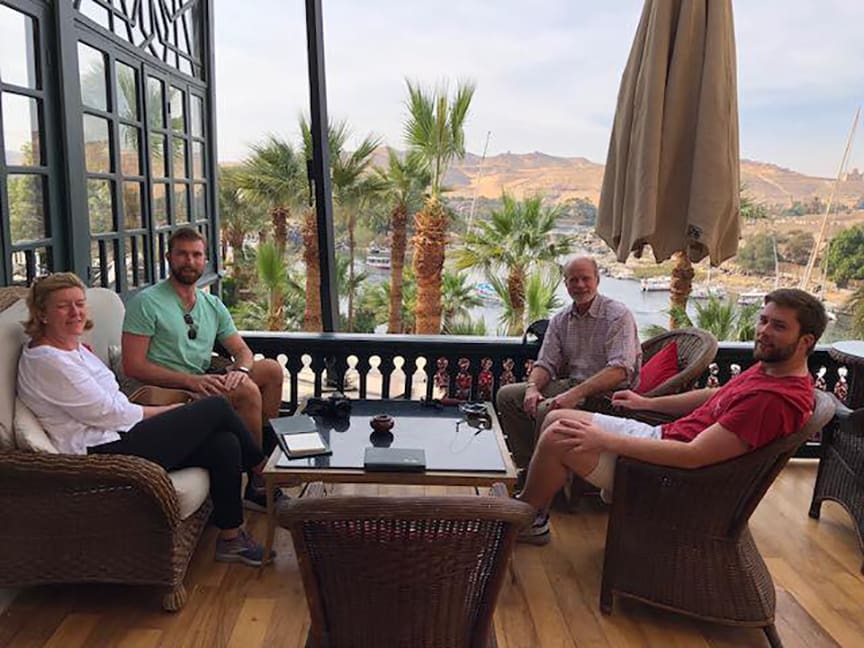
Later that evening we sailed on a felucca. Alison, who has been an intrepid sailor for much of her life, happily took control of the rudder as we gradually sailed along the Nile. On one side we could see the botanical gardens of Lord Kitchener’s island; on the other side of the bank we were able to see the Tombs of the Nobles. After some Nubian music, dancing, and tea, we were treated to an immaculate sunset.

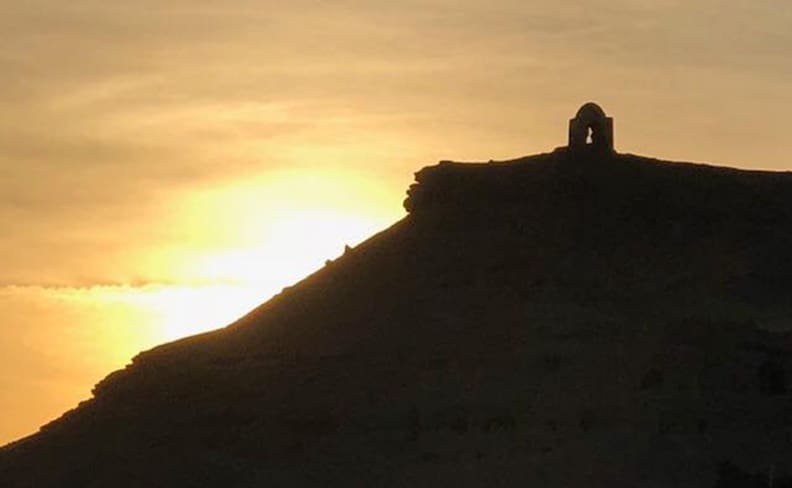
Our last night on the Cruise was spent on Christmas Eve, joined by our guide Dina. This was one of the many excellent meals we enjoyed aboard the Jaz Senator. The waiting and kitchen staff were extremely accommodating and gracious, whether it was preparing casual, Egyptian-style lunches or customary formal dining for dinner.

After dinner, we went to the cruise’s lounge, greeted by traditional bell-dancer and whirling dervish. And as it was Christmas Eve, we were also joined by Father Christmas himself, a bag of gifts in tow!
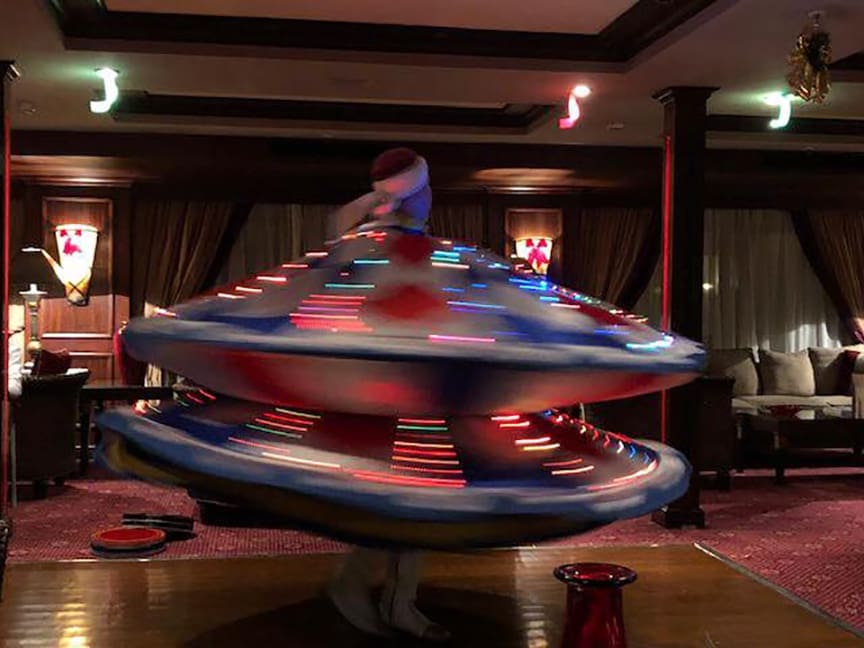
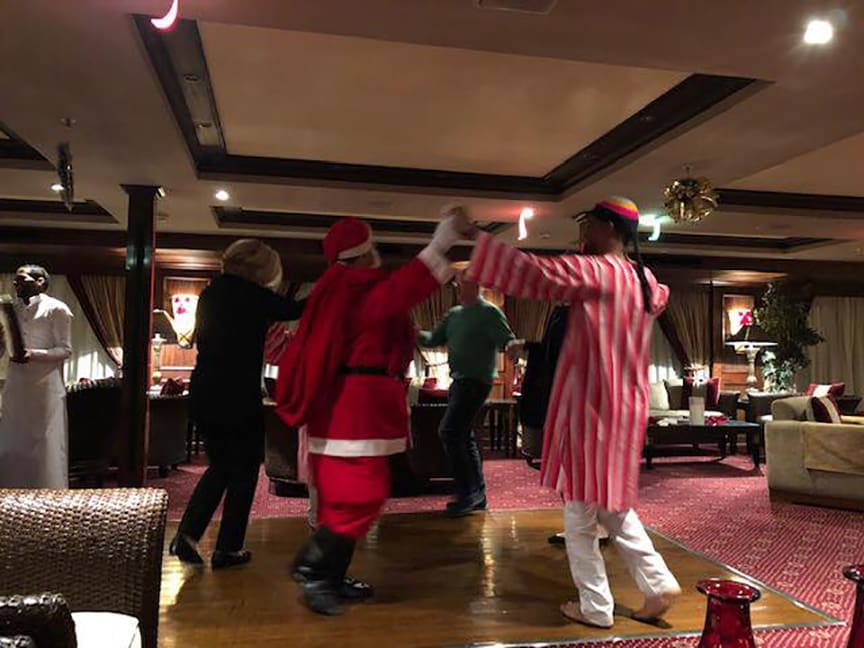
ABU SIMBEL
We then took an early morning flight from Aswan to Abu Simbel. Like Philae, preservationists quickly yet meticulously relocated the temples piece by piece. The primary temple is dedicated to Ramesses II and features low-relief sculptures of the famous Battle of Kadesh along its walls. Unlike other temples dedicated to pharaohs, this was not a mortuary temple. In other words, he proclaimed himself as a deity to worship. The same was done for his favorite wife Nefertari in her smaller, nearby temple.



GREAT PYRAMIDS OF GIZA
After spending the entire morning at Abu Simbel, we took an afternoon flight to Cairo. Our road transfer from the airport on the east bank to our hotel in Giza on the west bank truly provided perspective on how immensely large the city of Cairo is (estimated population of 20 million).
The hotel we stayed at during our visit to Cairo was the Mena House Hotel. It was originally constructed in 1869 as a hunting lodge by the Ottoman Khedive (viceroy). Even as the area around it rapidly developed in the ensuing decades, the hotel still retains unobstructed views of the world-famous Great Pyramids of Giza. We enjoyed this view for all of our breakfasts!

The following morning we drove to view the pyramids up close. The names of the three pyramids are Khufu (Cheops), Khafre (Chephren), and Menkaure (Mykerinos). The first is both the largest and oldest of the three, and has been recognized as one of the Seven Wonders of the World since antiquity. All were constructed in the 4th Dynasty during the Old Kingdom era and contrary to popular belief, slave labor was not utilized.
Walking up to the Great Pryamid of Khufu, it slowly dawns on you how massive it is. It inevitably inspired a sense of reverential awe, emitting an almost omnipotent aura. It is not hard to imagine that its monumentality would have had similar, if not greater, psychological effects on subsequent generations of Egyptian subjects.
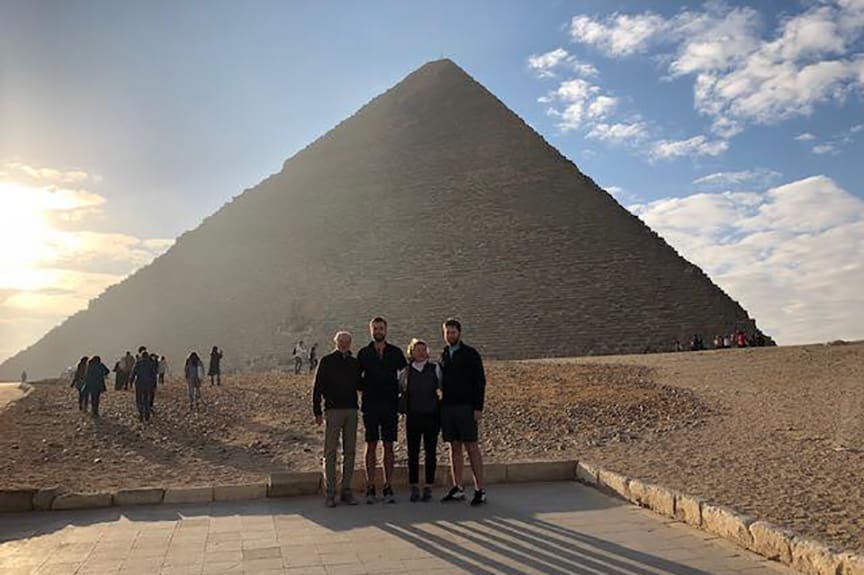
For those who are neither claustrophobic or out of shape, you can go inside and ascend the narrow staircase of the Grand Gallery to the “King’s Chamber.” After crouching down for the last stretch, you stand to rise to an entirely granite room, empty except for the granite sarcophagus that would have been Khufu’s final resting place.
We then proceeded to a site about a mile away to an observation point. Here, you can see all the of the Great Pyramids and the smaller pyramids constructed for other members of the royal family.
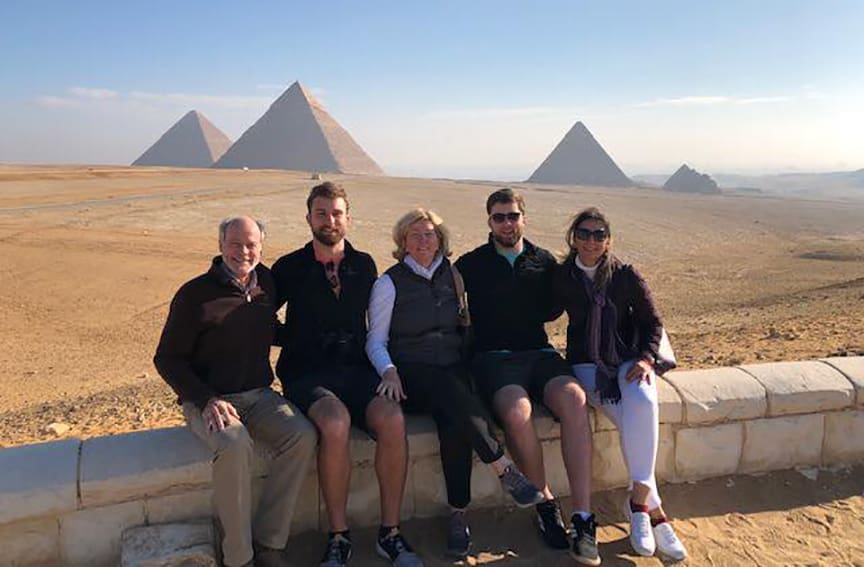
We then drove to the Great Sphinx, a mythical lion-human hybrid done in the likeness of Khafre. Major restoration work over the years have restored some of Egypt’s oldest monumental sculpture’s former glory. The nose and pharaonic beard remain omitted; the former effaced long ago (far before Napoleon’s cannons could have done so), while the latter is fragmented and dispersed in various locations around the world (including the British Museum).
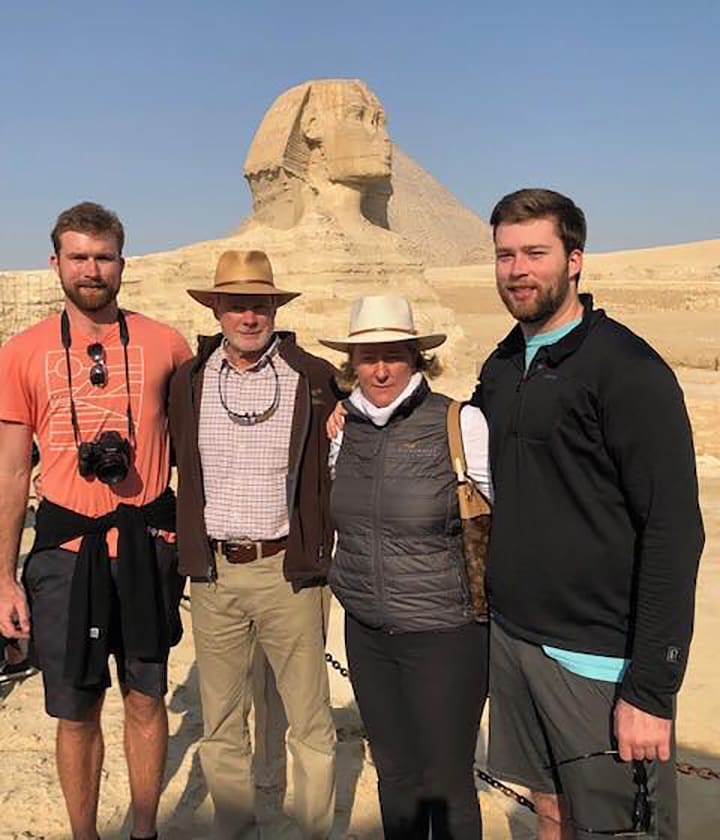

Later that morning, we departed for a tour of the Grand Egyptian Museum (GEM) construction site. This multi-billion dollar endeavor will provide a setting to accommodate the millions of annual tourists and properly preserve the innumerable artifacts intended for display; an effort truly befitting the country’s prestigious history.
We also visited the future museum’s Conservation Center. If you desire behind-the-scenes access to see the preservation process of some of humanity’s oldest treasures, a visit here is a must. A private guide provided us a tour, providing explanations for a selection of artifacts and descriptions of the artifact-specific preservation process. Examples of artifacts we saw was a chariot from Tutankhamen’s tomb, a laborer’s loin cloth and a cosmetics box.

MEMPHIS & SAQQARA
After lunch, we drove south to the former site of Memphis and Saqqara. Memphis was Ancient Egypt’s capital until the pharaohs relocated to the religiously significant city of Thebes during the Middle Kingdom. Nevertheless, Memphis remained as the administrative and economic capital until the Ptolemaic era. By the medieval era, the site was abandoned in favor of the modern-day location of Cairo.
The modern-day site contaqins no ruined buidlings, but instead contains a litany of monumental sculptures. The most notable one is the colossal limestone statue of Ramesses II.

Our next destination was Saqqara. Like the site of the Great Pyramids at Giza, it served as the necropolis for its pharaohs, these of the 3rd Dynasty. But unlike Giza, tombs were not exclusively for royalty, and tombs were continuously constructed throughout the remainder of Ancient Egypt’s history.
Saqqara is most famous for the stepped Pyramid of Djoser. Designed by the famous architect Imhoteph, its completion marked a clear transition point from the modest, mud-brick mastaba tombs to the colossal limestone pyramids of Giza. Inside the Funerary complex there is also a clear step towards stand-alone columns that would become a fixture of future temples’ hypostyle halls.


We were also able to enter a noble’s tomb dated to the Old Kingdom. The motifs contrasted sharply with the New Kingdom era tombs of the Valley of the Kings: instead of depicting the process of reaching the afterlife and their relationship with the gods, the walls were lined with low-relief, pigmented sculptures depicting scenes of daily-life. Outside of this tomb we were also able to see the Bent and Red Pyramids.

Enroute to the Mena Hotel, we stopped at a papyrus store. We were given a demonstration of how papyrus reeds were transformed into a writing surface used as early as the 1st Dynasty. We purchased a reproduction of the famous “Meidum Geese” paiting on display in the Old Egyptian Museum in downtown Cairo.
After dinner, Alison and Mark attended the nighttime Sound and Light Show, with accompanying narration from the famous Egyptian actor Omar Sharif.
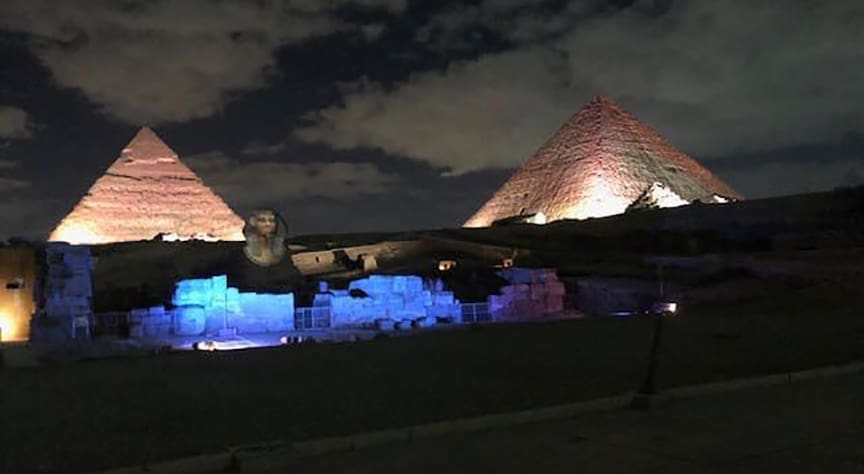
OLD EGYPTIAN MUSEUM, THE CITADEL, & KHAN EL-KHALIL
The following morning was the first day of our exploration of Cairo. Our original plan was to visit the Old Egyptian Museum first, but had a change of plans in response to the long queue. Instead, we arranged site inspections of two downtown hotels nearby: the Ritz-Carlton and Four Seasons. After the museum visit, we also visited the exquisitely refurbished Cairo Marriot and enjoyed a great lunch.

Once inside the museum, a visitor is immediately overhwehlmened by the sheer volume of artifacts on display: a 3-hour visit simply did not do the Old Egyptian Museum justice. But the museum showed its age (constructed in 1901), so the opening of the Grand Egyptian Museum will be welcomed for both visitors and preservationists alike.
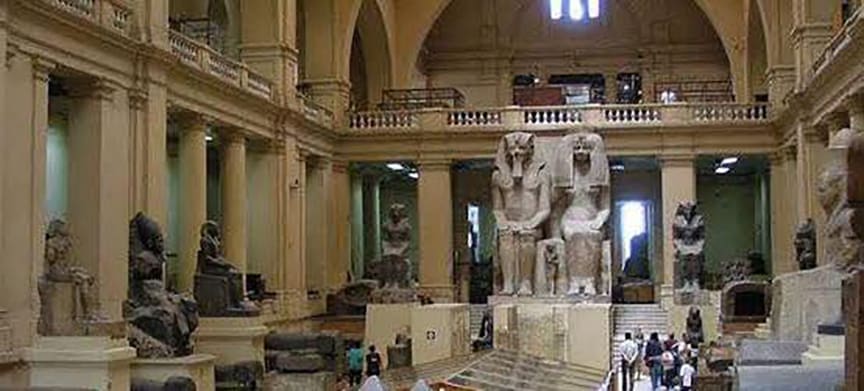
The collection includes artifacts from each era of Egyptian antiquity. Perhaps the most notable section of the museum are the artifacts uncovered from Tutankhamen’s tomb in the Valley of the Kings. It was difficult imagining how so many goods were able to fit into the small tomb we had visited several days earlier, especially the layered sarcophagi! The most prized possession is Tut’s solid-gold funerary mask.

Other highlights included a sculpture of King Djoser, the mummified remains of Ramesses II, the Meidum Geese painting, sculptures of Akhenaten and Nefertiti, sunk relief sculptures of the previous two and their children, and papyrus scrolls portraying scenes of the afterlife dated to the Middle Kingdom.

Akhenaten is perhaps Egypt’s most infamous pharaoh. He earned his reputation by abandoning the traditional deities of Ancient Egypt in favor of a sort of monotheistic belief in Aten, the solar god; his son, Tutankhamen, immediately renounced Aten upon his accession.
His wife, Nefertiti is also perhaps Egypt’s most famous female pharaoh, thanks to her bust located in Berlin’s Neues Museum. Their rule also prompted a dramatic change in Egypt art: the distended, non-idealized sculptural portrayal of Akhenaten is equally as striking as the sunk-relief sculptures of his family.


In the afternoon, we then headed to the the Saladin Citadel. This was our first non-Ancient attraction we visited; its construction was completed at the behest of Salah al-Din in 1183 C.E. to provide a virtually impenetrable bulwark during the 3rd Crusade. It would become Cairo’s most prominent symbol of its new-found status as the center of the Islamic world. The main building of note is the Muhammad Ali Mosque, dated to 1857 in the Turkish style.

The view of Cairo and the Pyramids of Giza in the distance was also spectacular.

At night, we wandered the streets of Khan el-Khalil bazaar, Cairo’s most historic souk. Though mostly catering to tourists, there are still some traditional workshops used by locals.
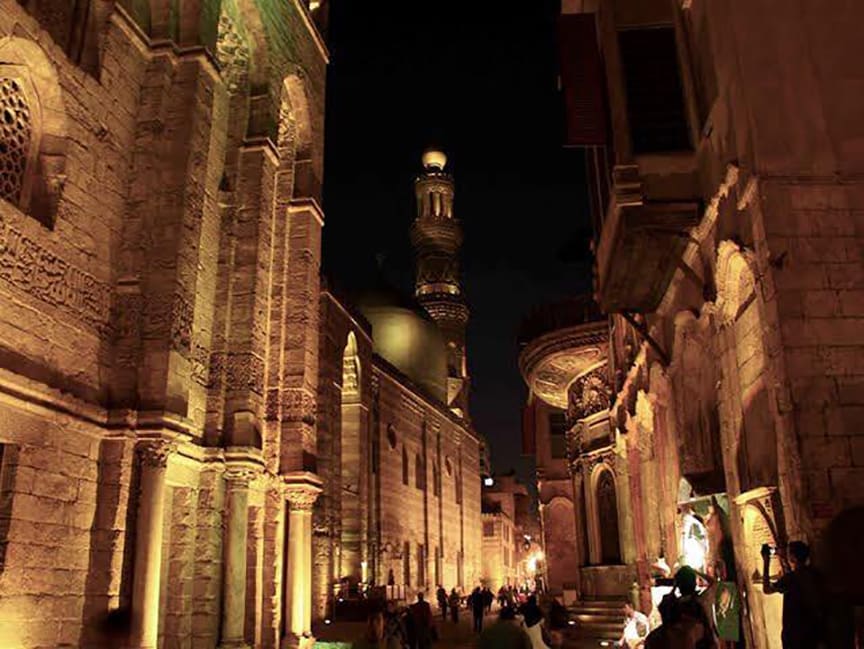
ISLAMIC & COPTIC CAIRO
The following morning we checked out of Mena House Hotel for our last day of sightseeing in Egypt. We began with the Refai and Ibn Tulun Mosques; The ornate, geometric style of art we came to love in Morocco was on full display.
Islam first arrived in Egypt in the 7th century Arab conquests. However, Coptic Christianity had been deeply entrenched in Egypt for centuries, and it was not until the 14th century that Egypt became primarily Islamic.



In the afternoon, we began our tour of the area known as “Coptic Cairo.” Though Islam became Egypt’s primary religion, as many as 20% of Egyptians today are Coptic Christians. This branch of Christianity is distinct from Greek Orthodox, Catholicism and Protestantism. It is in fact more in line with the Christiainty primarly practiced in Armenia and Ethiopia. This district is also home to the Ben Ezra Synagogue, a relic of Egypt’s Jewish population that now number less than a dozen.
Main attractions include the 3rd century C.E. Hanging Church (located above the ruins of an old Roman fort and holder of several religious icons), Saints Sergius and Bacchus Church (claimed to be a site visited by the Holy Family during their flight into Egypt) and the Coptic Museum.

Though possessing a relatively small collection, the Coptic Museum was utterly fascinating. A large collection of manuscripts depicted how the Arab Conquests affected Egypt: the oldest were written in Coptic, then in both Coptic and Arabic, and the most recent were exclusively in Arabic. In addition, the various crosses demonstrated how its earliest believers adapted their faith to Egypt; one featured a cross within an Ancient Egyptian ankh, a symbol associated with the dieties ability to control life, death and the afterlife. There was also an extensive array of iconographic paintings.


In retrospect, it was quite incredible how much we were able to do and see within a 10-day span. Egypt’s penchant for monumentality did not disappoint, and we all look forward to an opportunity to visit once again!
(4 night Cruise from Luxor to Aswan on MS Jaz Senator)
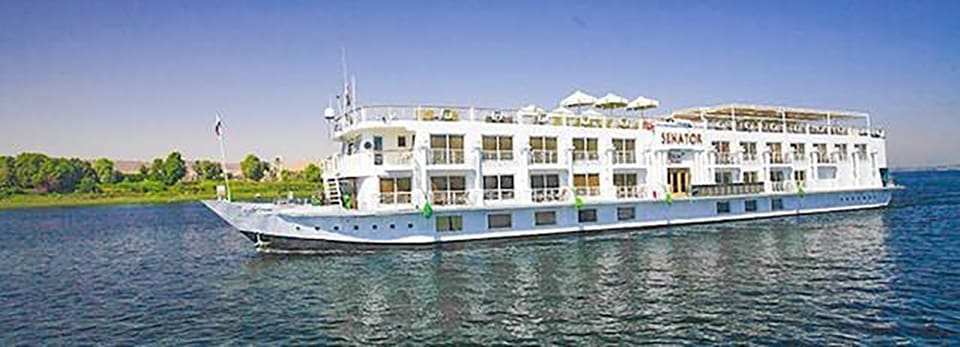
Nile Cruise MS Jaz Senator
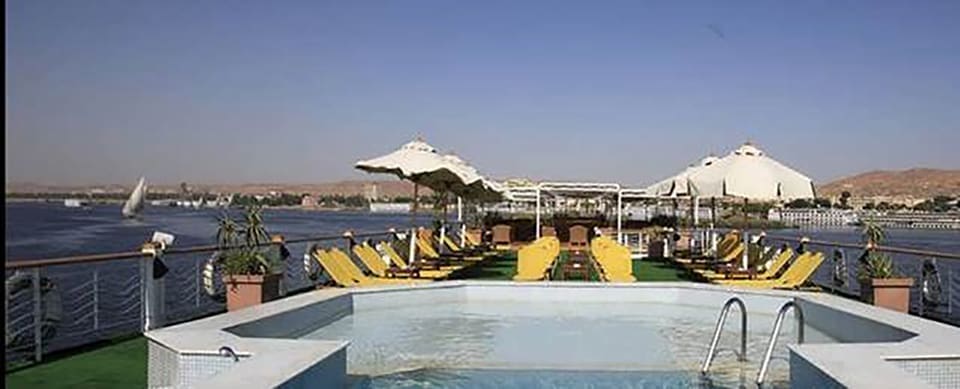
Nile Cruise MS Jaz Senator – Deck
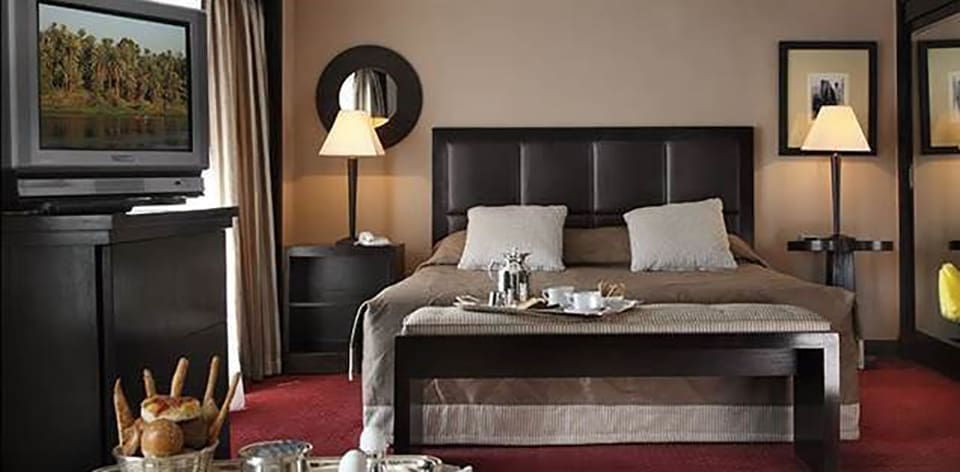
Nile Cruise MS Jaz Senator – Room

